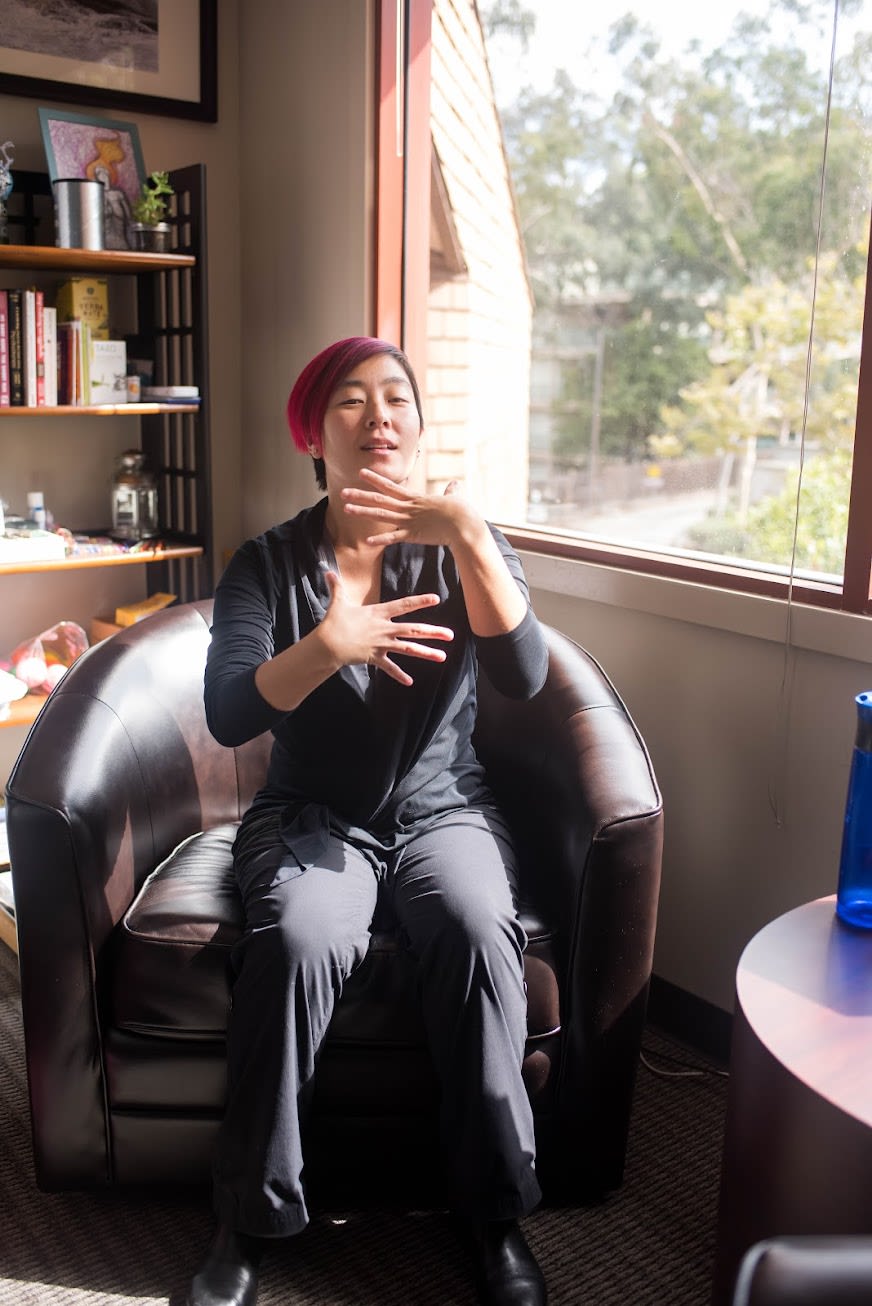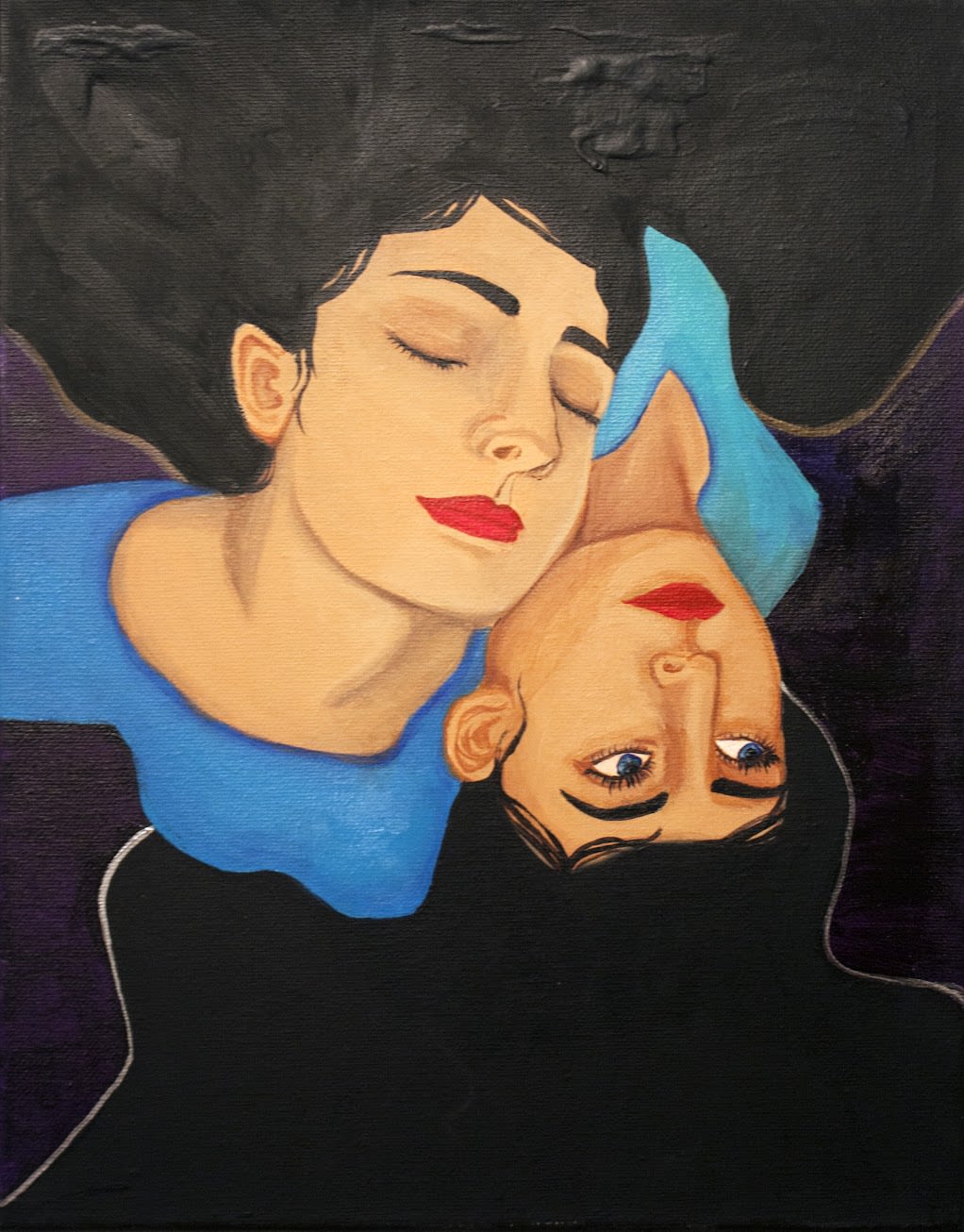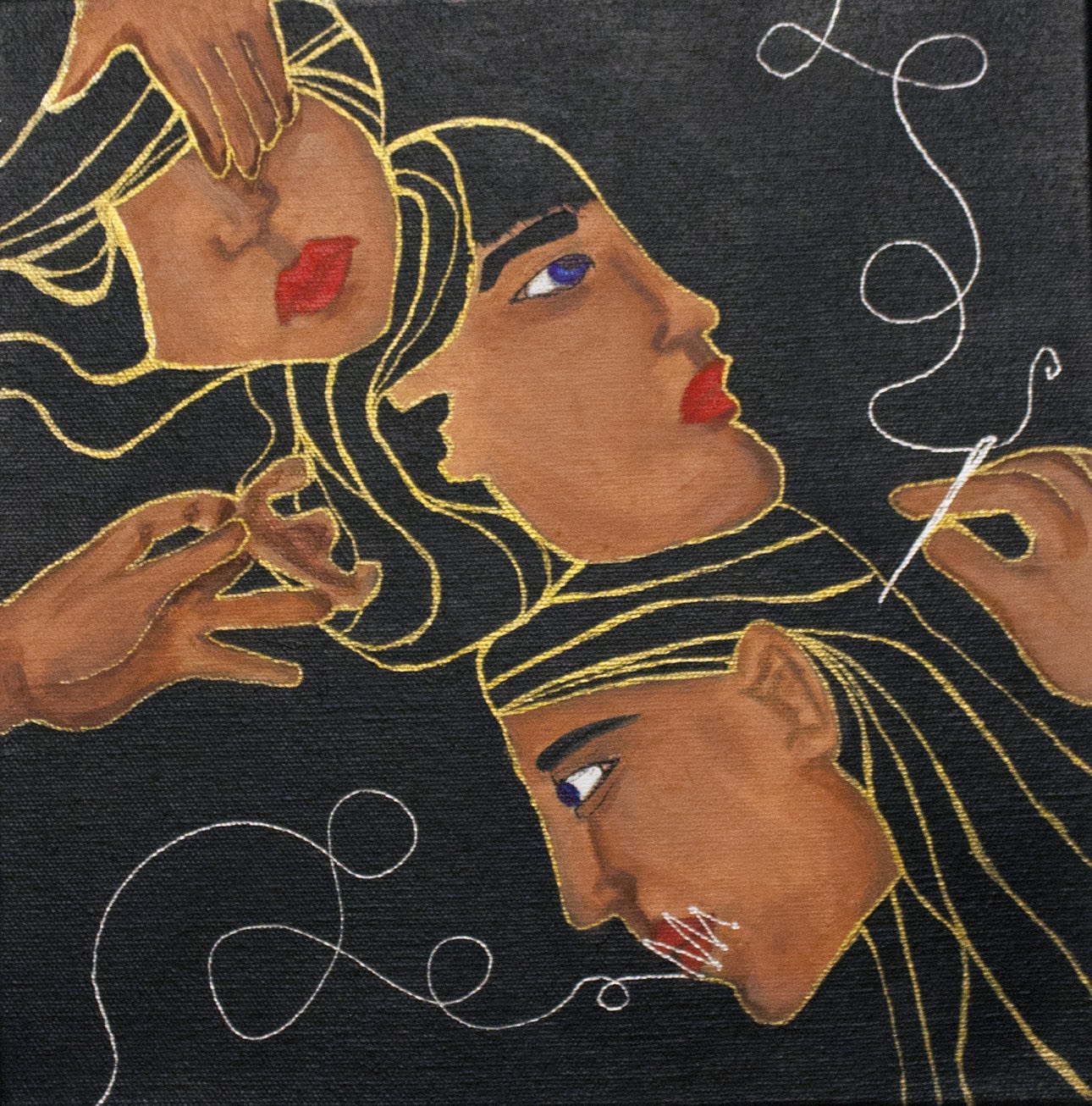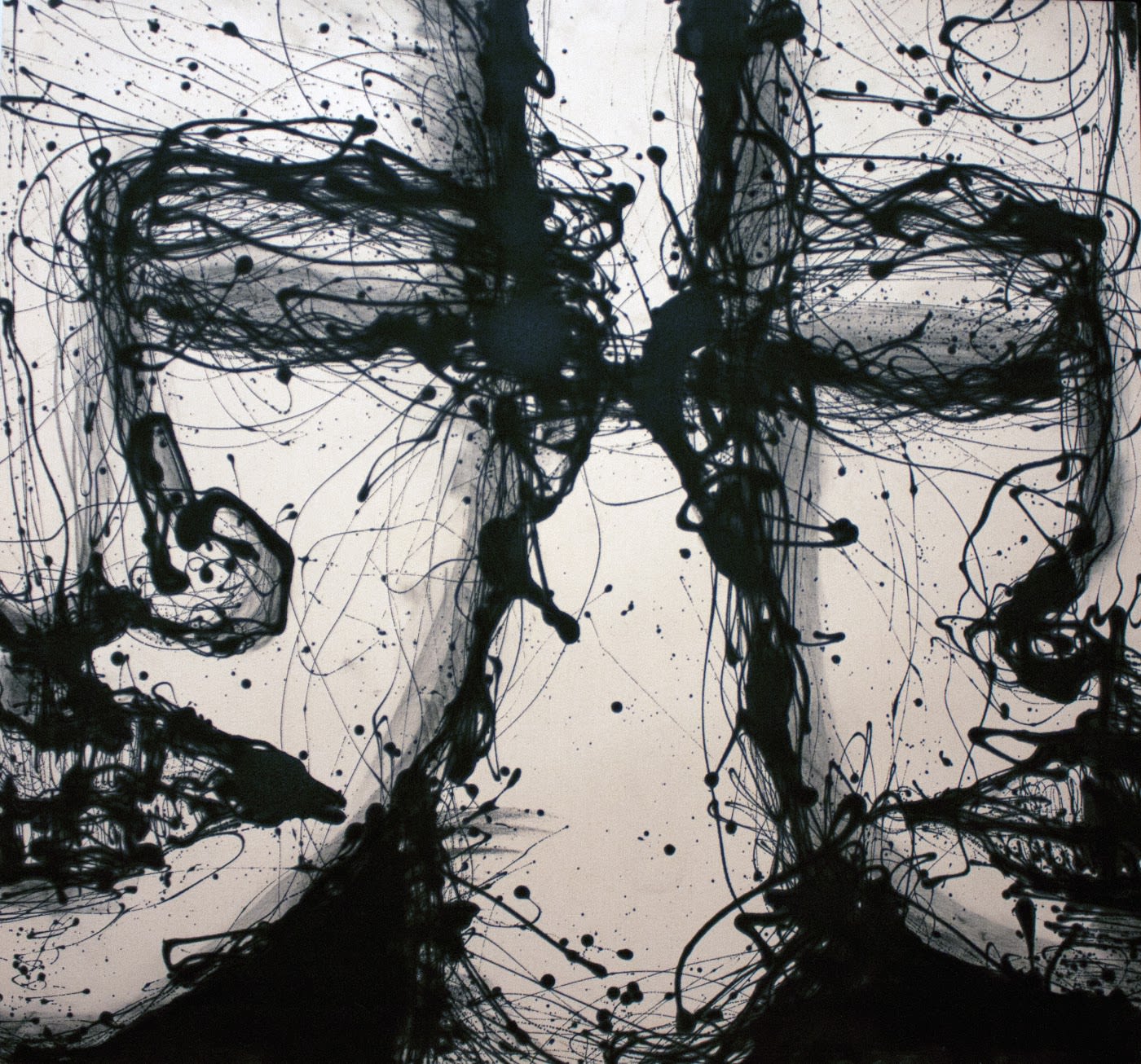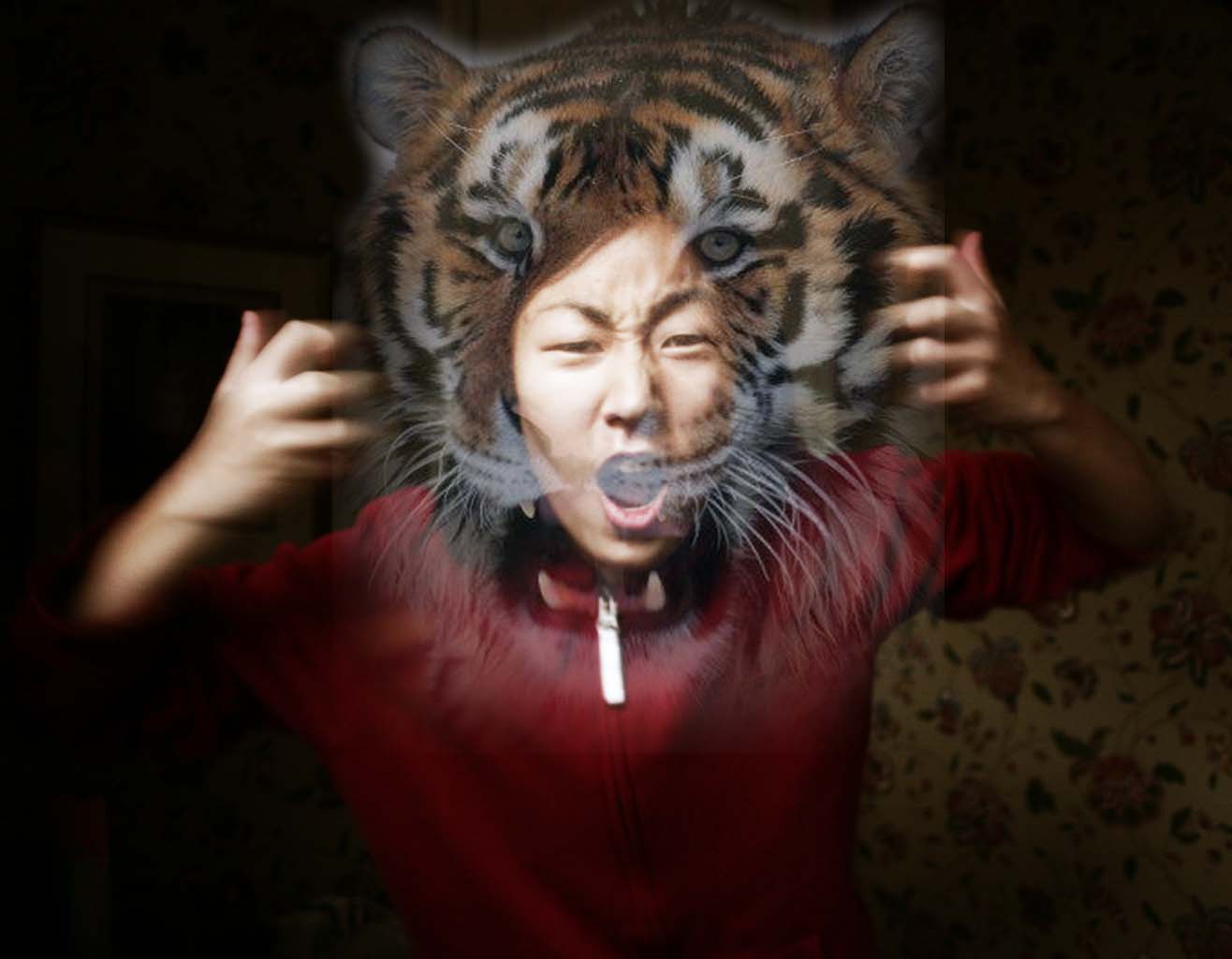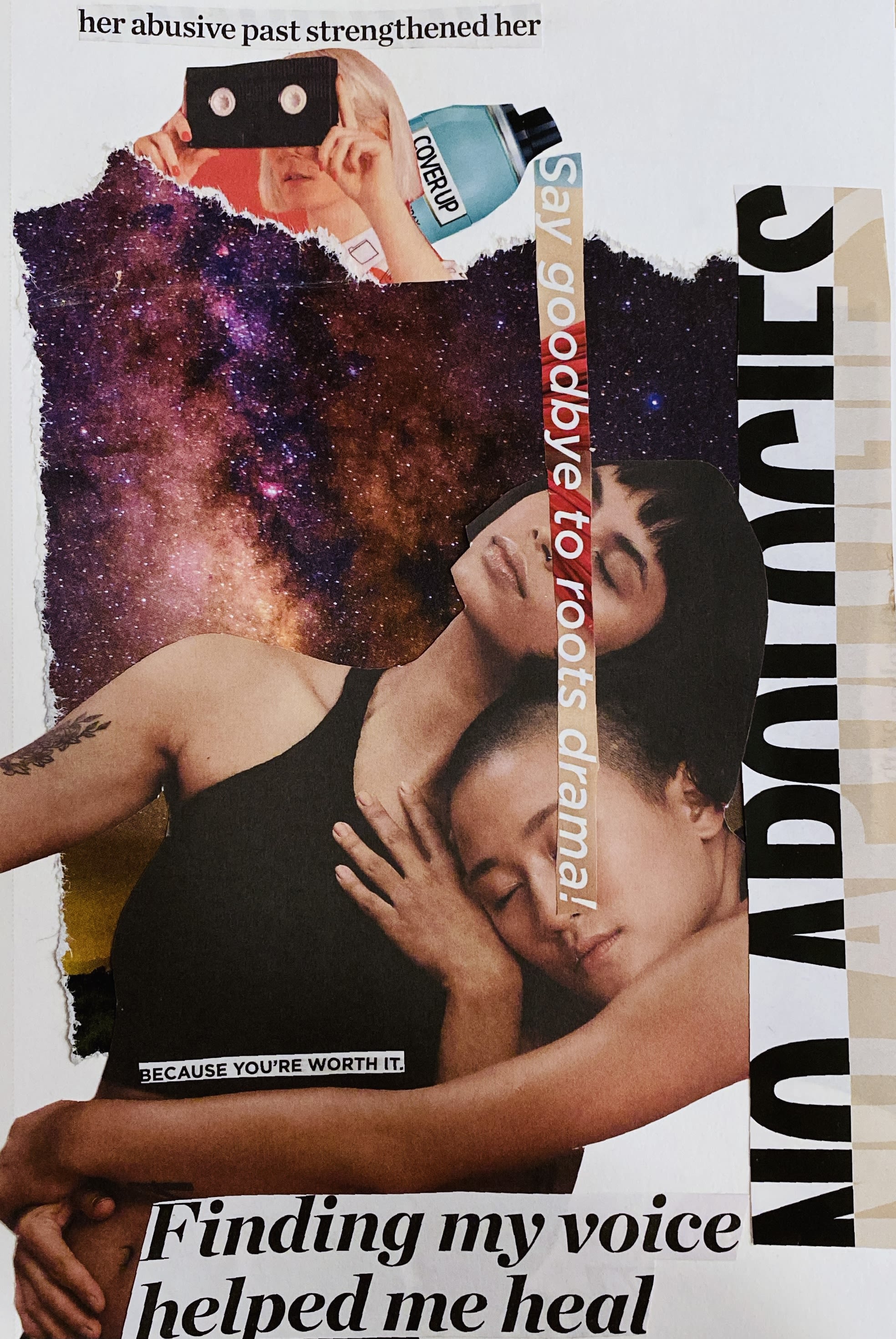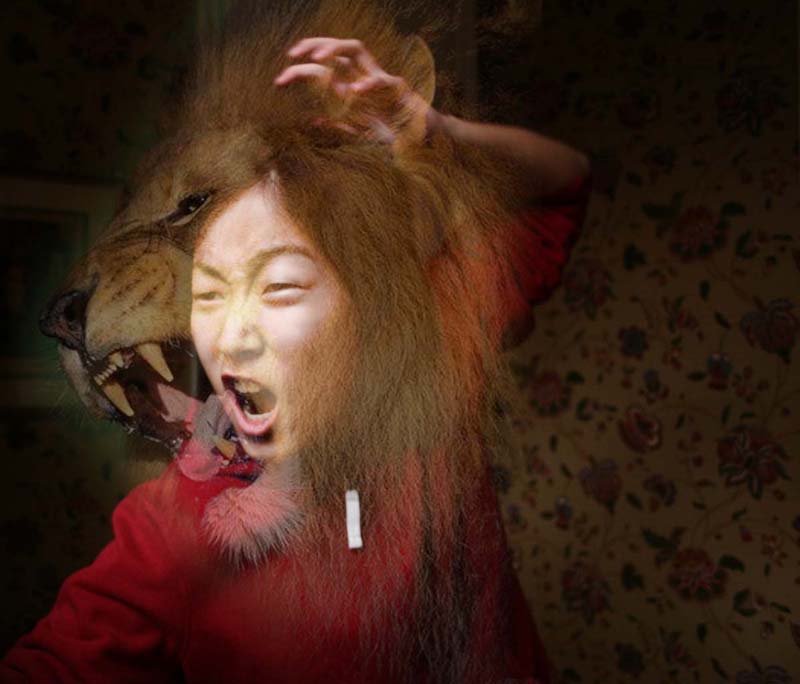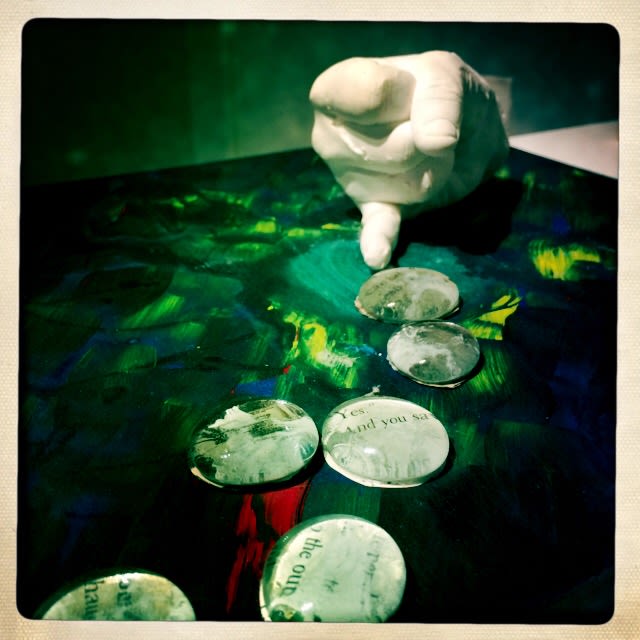Noel King Uses Art to Pave a New Path for Deaf Individuals
Art is ... life.

by Sophie Lucido Johnson (MFA 2017)
There was a time in Noel King’s (MA 2015) life when she thought she might be an art historian, photographer, or painter, disciplines she studied in high school. Then she pivoted in college and decided to major in psychology—which she loved—but something was still missing.
That was when King discovered art therapy, which she described as “a perfect marriage between psychology and art.” After that, King got her master’s degree in Art Therapy at the School of the Art Institute of Chicago (SAIC), and today she is a celebrated art therapist and a Ph.D. candidate in Expressive Therapies at Lesley University. As an art therapist, King fills an important space that would be nearly empty without her: according to King, there are only about five art therapy graduate students in the entire United States who are Deaf—and she is one of them.
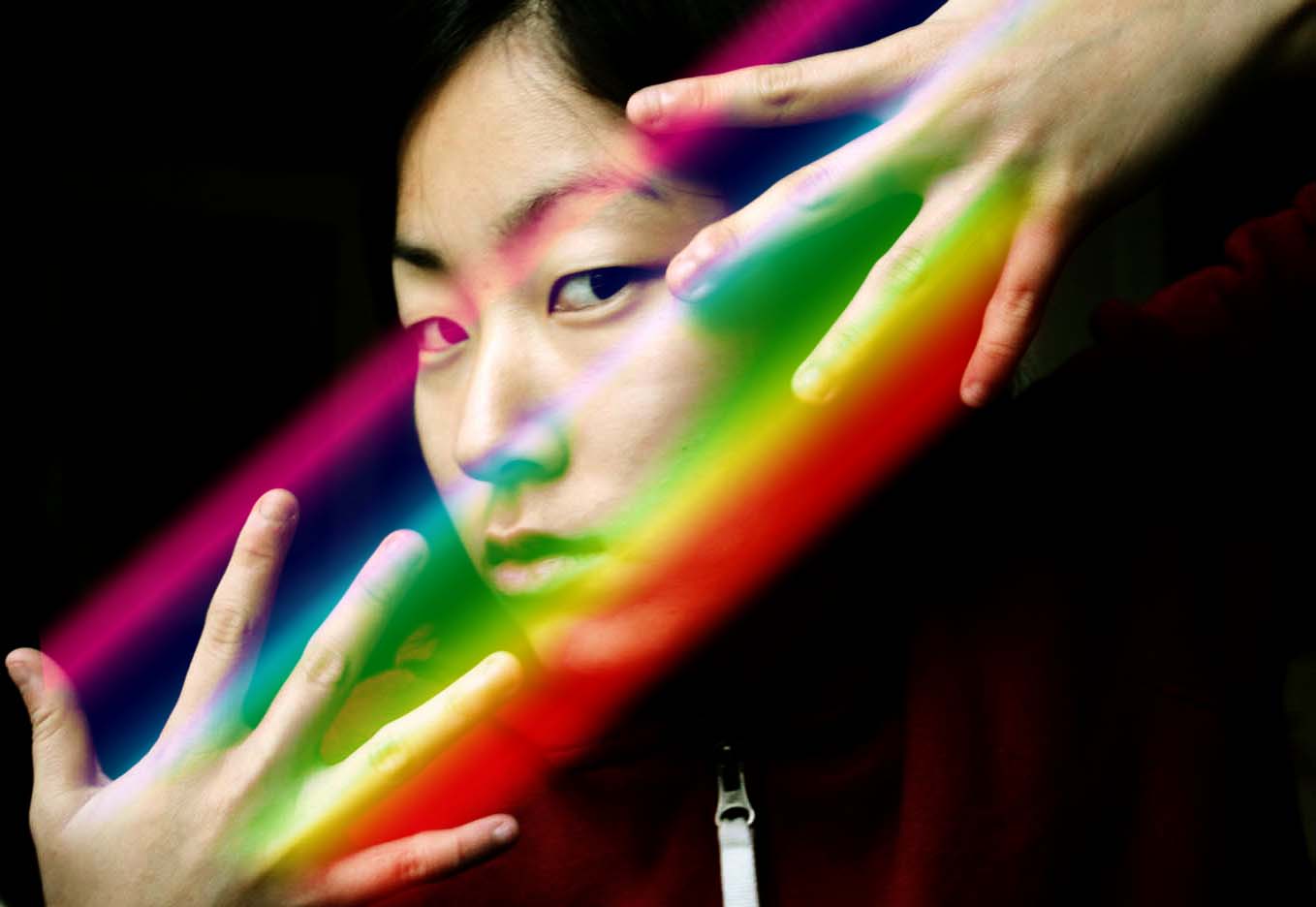
King signs the word "breathing" as she talks to a client in her former office.
King signs the word "breathing" as she talks to a client in her former office.
Growing Up Deaf
King was born in South Korea and was adopted by Deaf parents in the United States when she was five months old. Since her family was also Deaf, deafness wasn’t a conversation at first. “We did not have to talk about deafness under a medical lens, like a hearing family with a Deaf child might have to. We live in the Deaf community and breathe in our Deaf culture on a daily basis,” King said. It wasn’t until she encountered communication barriers as a child that she started to notice she was different from other people.
“The system is designed for hearing people,” King said. “My parents encouraged me to advocate for my rights as a Deaf person.” This can include requesting an American Sign Language interpreter or alternative communication at work, school, or elsewhere.
Noel King, Bound. A painting created during King's time studying at SAIC.
Noel King, Bound. A painting created during King's time studying at SAIC.
Where American social systems can be oppressive, limiting, and unwelcoming (for example, schools where sign language interpreters aren’t provided or jobs where verbal communication is the only form of communication), art has consistently provided freedom and safety for King. She started painting when she was five and began entering art contests at the encouragement of an art teacher at age 10. She went to a magnet high school to study studio art and continues to maintain a rigorous personal practice.
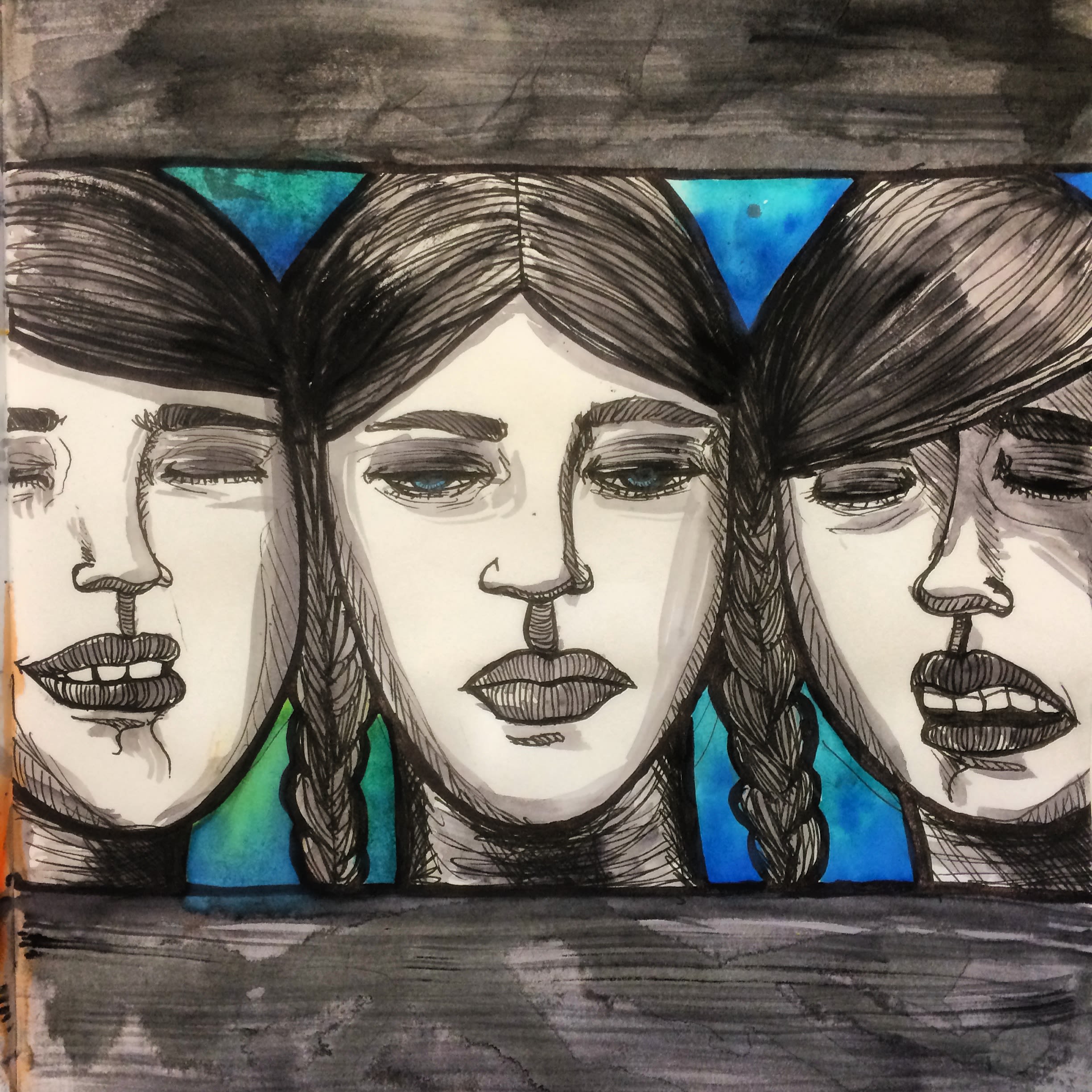
Exploring Identity in Artwork
King’s artwork tends to be mixed-media, combining pen and ink with lush watercolors, acrylic, or oil paints. She often focuses on surreal but expressive human faces and bodies: a woman with her eyes closed, faintly smiling but partially submerged in water; a triptych of line-shaded faces smiling, grimacing, and resting; a female body in repose, looking toward the sky but suspended in midair, with joints connected in string and paint splatters behind her. King also works in sculpture, with a specific focus on human hands, and creates digital and video art.
King shared that her art is mostly about her personal journey and often includes self-portraits or pieces exploring her identity. “If I am not a Deaf, queer, Korean American adoptee, then I might not need art to escape and express my feelings or thoughts, but art saves my life,” King said. She cites Frida Kahlo, Barbara Kruger, Man Ray, Alphonse Mucha, and Lady Gaga as influences.
“I am one of the minorities, but when I am making art, the sense of minority disappears, and I am Noel the artist,” King said. “I started to create artworks that represent my people because they aren't visible enough in the art world, especially in art museums and galleries.”
Art aided King as she explored her many identities; when she began to pursue psychology, she thought it would be helpful to other Deaf people as well.
“The system is designed for hearing people. My parents encouraged me to advocate for my rights as a Deaf person.”
“Most Deaf people are visual learners,” King said. She added that some Deaf people experience Language Deprivation Syndrome (LDS), which happens when Deaf individuals don’t have exposure to sign language at a young age or experience inconsistencies in exposure to natural language as their brains are in critical growth development stages. LDS creates a higher risk for mental health challenges. King explained, “Art therapy offers a space where Deaf people can work on their goals or express their feelings or thoughts without being triggered by communication barriers.”
Many of King’s clients—ranging in age from children to older adults—are Deaf. King has her clients choose from an array of art materials and focus on a specific goal for each session, such as grief processing, moving through traumatic experiences, or working on self-esteem. After the artmaking is complete, King discusses the work with the client and creates a plan for the next session.
“As an art therapist, I don’t interpret what a client's artwork means,” King said. “I’m here to provide guidance for clients to work on their goals. I have learned that art therapy does bring positive outcomes for clients and their healing journeys, especially for the Deaf population.”
Noel King, Hear No Evil, See No Evil, Speak No Evil.
Noel King, Hear No Evil, See No Evil, Speak No Evil.
Noel King, Connection. This painting was created by dripping enamel paint onto a canvas on the floor. The canvas was prepared by fellow Deaf artist Stefrose Renner.
Noel King, Connection. This painting was created by dripping enamel paint onto a canvas on the floor. The canvas was prepared by fellow Deaf artist Stefrose Renner.
King signs "tiger" in ASL. This photo was inspired by Chuck Baird, one of the Deaf artists who founded the De'VIA (Deaf View/Image Art) movement.
King signs "tiger" in ASL. This photo was inspired by Chuck Baird, one of the Deaf artists who founded the De'VIA (Deaf View/Image Art) movement.
Noel King, Freedom. An art response to her client's experience.
Noel King, Freedom. An art response to her client's experience.
Researching New Approaches
In her field, King wants to share her observations about the potential for art therapy to help Deaf individuals express themselves. In her master’s thesis at SAIC, she wrote about pilot research on art therapy assessment for Deaf children, and she hopes to expand on that research through her Ph.D.
King signs the word for "lion."
King signs the word for "lion."
“I have seen higher percentages of success in treatment for Deaf people when we use visual tools, such as art therapy, trauma-informed care yoga, sensory movements, and expressive art therapies. I hope that my research will help mental health professionals to have a better understanding of Deaf people and how to work with them,” King said, noting that sometimes mental health professionals can accidentally retraumatize their Deaf clients when they lack cultural understanding or fail to accommodate communication barriers.
Noel King, Drawing Emotions. King used her own hand as a model for this cast that signs the word "drawing."
Noel King, Drawing Emotions. King used her own hand as a model for this cast that signs the word "drawing."
Wherever this research goes, it’s clear that King is at the forefront, but resources are limited. There are few mental health services that are designed for Deaf people; often, individuals who are Deaf must turn to video therapy, as there aren’t local resources. There are no art therapy programs in the United States run by or designed specifically for Deaf people.
“I am one of the minorities, but when I am making art, the sense of minority disappears, and I am Noel the artist.”
As she finds herself paving the way, King acts as a mentor to other Deaf art therapist graduate students who are pursuing careers. “I didn’t expect to be a mentor, but I am happy to be one of the mentors that encourage art therapists to break the glass ceilings or systemic barriers,” King said. “It’s time for the underserved population to be served equally.” ■

